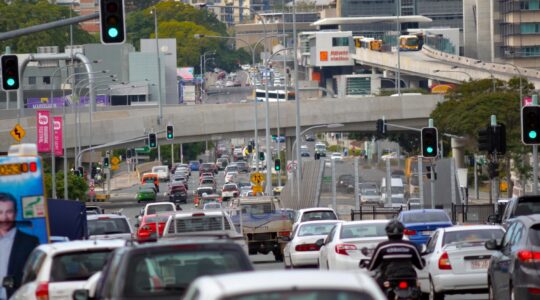Almost three-quarters of the world’s adolescents will be living in cities within 25 years, raising fears of increased poverty and isolation for young people.
A new global report by experts in adolescent health, including from Australia’s Murdoch Children’s Research Institute (MCRI), found poor mental health, rising obesity rates, exposure to violence and climate change were among the key challenges facing our adolescents today.
MCRI Professor Peter Azzopardi said the 2025 Lancet Commission on Adolescent Health and Wellbeing report outlined how supporting young people’s health and wellbeing could improve economic, social and public health for generations to come.
Professor Azzopardi said it predicted that by 2050, 70 percent of the world’s adolescents would be living in urban areas.
“While this potentially brings benefits, rapid unplanned urbanisation may also accelerate poverty, isolation and insecure housing.”
He said urban, public spaces should be more amenable and tailored to young people, such as safe and engaging spaces to congregate, which would have a powerful effect on health outcomes.
Professor Azzopardi said, in general, the report found investment in adolescents’ health and wellbeing didn’t match the scale of the problems faced by young people.
He said it stated while adolescents make up 24 percent of the population, or about two billion people, they receive just 2.4 percent of global development and health funding.
“By 2030, more than half of adolescents will be living in countries where their demographic experiences an excess burden of complex disease.”
Professor Azzopardi said the report found the ongoing challenges faced by this age group included:
- High cases of poor mental health and limited support services.
- Increasing rates of obesity due to complex environmental and commercial factors.
- Lack of digital safety and exposure to cyberbullying and misinformation.
- Experiencing violence in conflict-affected areas and within the home.
- Ongoing fallout from the COVID-19 pandemic and related public health measures.
- Widening gaps in reproductive rights, particularly for young women.
- Environmental challenges and climate change impacts.
He said urgent action was required to better protect young people from violence and ensure equitable access to education and reproductive rights.
“Almost half of adolescents have experienced violence, profoundly impacting their social and emotional development and wellbeing.
“Whilst global efforts have largely closed the gender gap in high school education, by 2030, almost a third of young women will not be in post-secondary education, employment or training.”
Professor Azzopardi said there was a great need for targeted actions that focused on early intervention.
“Meaningful, evidence-based, multi-sector partnerships with young people will be the key to improving health and wellbeing,” he said.
“But we must remain accountable by ensuring that any progress is monitored closely and reported on regularly. As our population ages and fertility rates decline, the health of our adolescents becomes even more crucial.”
He said potential solutions and actions outlined included:
- Advocating for change and amplifying the needs and voices of young people.
- Developing goal-centred approaches through the Office of the UN Secretary with a focus on measuring and improving adolescent health and wellbeing.
- Involving young people in community-based environmental programs.
- Scaling up public health programs that improve sexual and reproductive health outcomes and reduce gender-based violence.
- Strengthening actions within health and education sectors while reinforcing collaborations.
- Limiting the exposure of advertising targeting adolescents.
- Promoting and encouraging the healthy use of social media and online spaces
Read the full report: A call to action: the second Lancet Commission on adolescent health and wellbeing.








